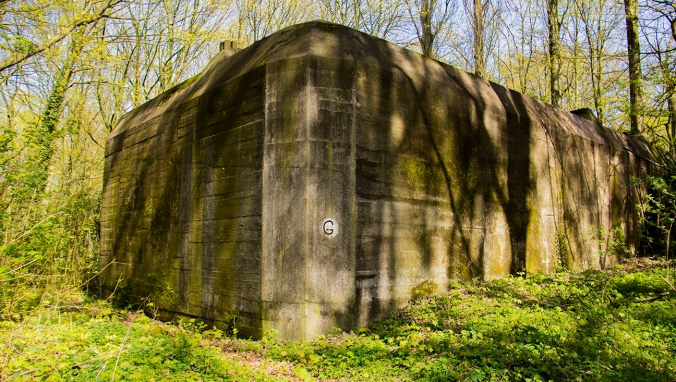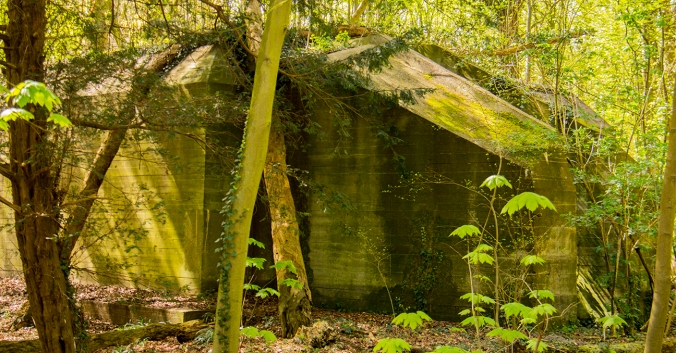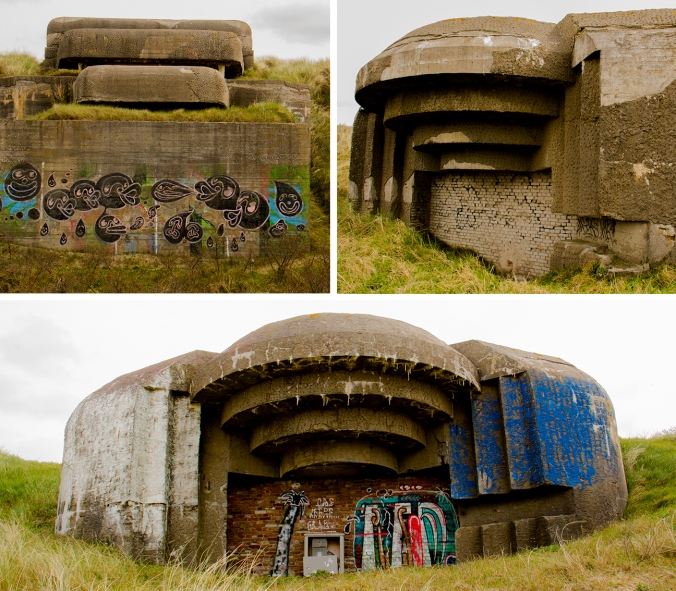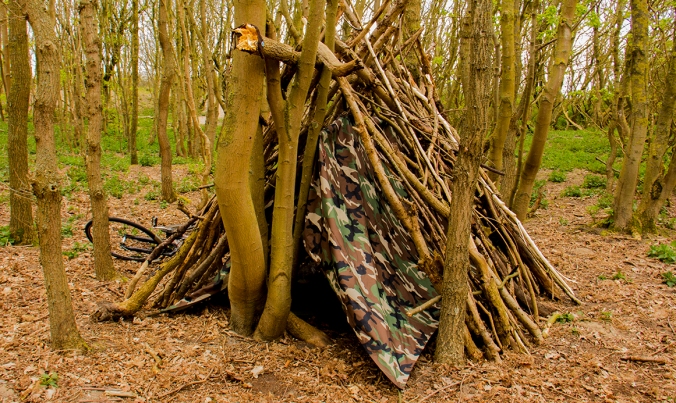Every country has it’s black pages in the history books. Sometimes all evidence is erased, sometimes statues or memorials remember us from these dark times. In our case the history is hidden. Small pieces are found here and there, even though they are hidden under a thick layer of sand. This is a journey into the dark history of The Netherlands.
A month ago Eveliene asked me if I wanted to go on a trip with her. A journey where we would go on a search for pieces of WW2 history; a search for bunkers built by the Germans during the occupation. The Netherlands was part of a project called “The Atlantic Wall” where a chain of bigger and smaller bunkers was built to stop an allied invasion. Plans where made, dates where set, but sadly in the end Eveline was busy with other awesome projects. (Check her website, she gives some great tours in Haarlem!) I decided to pack my bag, load up the bike and go on a little solo adventure!
The start of this journey was at the “Hoek van Holland”, about 80 kilometers southwest of Amsterdam. Around two kilometers landward there was a place hidden in a forest close by that I was eager to see. Cycling trough the sunshine I approached the forest. Birds where singing, old people where riding their E-bikes and I was exciting for the history to unfold itself. The first bunkers I encountered where two small ones hidden in the sand. It has been 70 years ago they’ve been built and nature is taking over. The structures where built in a way they could stand the most tough weather conditions for years on end. But these where not the ones I was so eager to see.

I cycled further into the forest, not knowing what to expect. While cycling and searching for the dot on the map in the book I previously bought I saw it. It was enormous!

I counted two, three, four, five… I think there were about 15 bunkers made out of armored steel and concrete, standing there, looking at me, silent and breathless. 70 years ago there were two headquarters of a regiment of infantry and one artillery bunker. There was a hospital bunker, two ammo storages, an eating quarter and more housing units. I can’t imagine how the people must’ve been living there. A concrete brick as a house, cold and practical without any form of decoration. For me, it felt like alien spaceships landed and turned into stone.

All of them where closed down, so sadly I could only check the outside of these giants. These blocks of concrete are now the houses of huge colonies of bats. Next to this there are certain types of endangered and specific mosses growing on them. Without knowing, the Germans made a great habitat for flora and fauna.
Strong headwinds made sure I wasn’t going north too fast. Because of this I found some bunkers hidden in the dunes not too far from The Hague. When checking them out one thing popped in my mind. “This would be an awesome place for the night!” And so it was. When the sun had set, a small bunker on top of a dune became my roof for the night. With a full moon shining trough the broken concrete and my own little Atlantic wall for my candles this was the blueprint for a great night of sleep.

Next morning I would search for a whole line of bigger and smaller buildings. Maybe ten, maybe 50, maybe just five. For some I had to climb over fences, go trough forbidden zones or crawl trough small holes in the concrete.
On the south side of The Hague I found the first one, hidden in the dunes. It was closed but a little stairway into the ground revealed some hidden rooms.

The rooms and hallways where filled with trash, beer cans and other shit. Nothing left of their spirit. It was exciting to explore these dark and damp rooms but sad as well. It showed my how people deal with importent things from history. When there is no wall around it, people come and use it as a dumpster.
With dark skies around me I peddled to the north of The Hague, to see some real fat basterds. The Hague was an important town; many high placed nazi’s took residence over there. With this information, the town had to be hugely defended from an upcoming invasion by the allied forces. Therefore a line of huge structures was set up. Some of them had radars within, others canons. Now the biggest colony of bats in Europe lives in these concrete buildings.

In February 1944 a small group of six French commando’s came ashore deep in the night. Their objective was to go inward and scout the landmarks and dunes for a future invasion. An English ship left them with a rubber boat close to the shore and would pick them up next morning. In the night the German patrol saw there was activity on the beach or in the water and fired some red and green flares to see what was happening. At sea the English ship sees the flares, but doesn’t act, afraid of being spotted. There was shouting and screaming and they see German flashlights on the beach towards the landing place of the six. Next morning at dawn the six are not at their meeting point and the English ship leaves back to the U.K. without the six. When darkness sets in again, the plan was to go back for the six commando’s. The weather was very bad and very stormy so the ship was unable to sail out. In the darkness of the morning, the German patrol hears screaming from the sea once again. They go onto the beach to only see a rubber boat with three dead bodies. Later that day the other three bodies of the French commando’s would drift ashore. This was later called: “Wassenaarse Slag“.
Other bunkers didn’t reveal themselves as easy as the ones in The Hague. Or where behind a fence, but I guess a true bunker-explorer doesn’t get get stopped by something as small as a fence. The Germans also knew this, but in stead of bunker-explorers in the future they where thinking about allied tanks. To stop them you’ll need a wall. An quite long and thick wall. Here and there remains of these walls are still visible. For me it’s a weird idea; a wall trough a national park, almost dividing the nature.

Straight trough the national park “Zuid Kennemerland” the wall is built. Many of these walls remain because they are hard to clean up. I guess they would do a pretty good job holding back tanks, if they even stand today.
After all these discoveries it was time to find a place to rest my head again. Although there were no more bunkers to be spotted, and all the bunkers I previously saw where closed or incredibly dirty. Cycling trough the treeless dunes I knew this was going to be a challenge for me and my tarp. Rain was suspected so a covered sleeping place was desired to spend the night kind of OK. And best a place with not too many people. By now it became dark, so I decided to use the good old tactic of just going into a small road that leads away from the big road. Within a couple of minutes I found myself surrounded by small trees. When I walked into a random flock of trees my eye fell on something. It was not a bunker, but it was the perfect spot for me, my tarp and some good dreams.

This little hut was probably made by kids
During these days I’ve learnt a lot about the history of our little country. I’ve seen leftover pieces of these black pages, slept in them, felt them and seen what they mean nowadays. I can only imagine how it feels when your land, your home is invaded by others. Rules are pushed upon you and your old way of life is forbidden all of a sudden. You find yourself at war, you can’t trust your neighbor and “police” are coming for your friends. This is still happening everywhere, and we can just be happy that we live in freedom. I’m glad the bunkers are still here to remind us of our freedom. They will slowly fade, but the memory will not.

“Back to the silent beach; side issues blow away.
Sea flows trough the dunes; surf rustles in the crown.
Here is space; to love.
Have a look at my Facebook page for other journeys and plans!